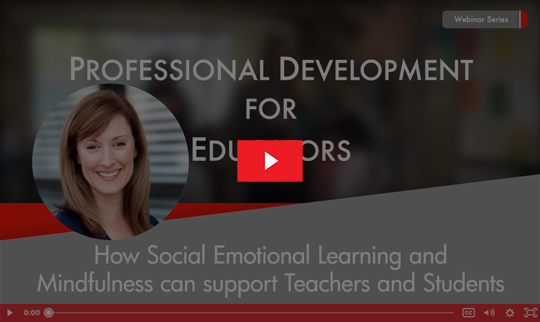4 Ideas for Practicing Mindfulness with Children
What is mindfulness, and how do you practice it? This article explores the concept of mindfulness and provides four simple ideas to begin to practice mindfulness, on your own or with children. Plus, download The Four Steps of Mindful Listening Resource to help students with mindful listening.
What is Mindfulness?
Think about the last time you smelled a flower. You probably looked at it first, held it to your nose, closed your eyes, and inhaled its sweet scent. For that split second, when the sense of smell was the only sense your brain was processing, you were practicing mindfulness.
The term “mindfulness” has become more mainstream over the past decade; it’s on the bulletin board of a staff workroom, in a classroom lesson plan for the morning routine, on a magazine cover in the waiting room of a doctor’s office. But what exactly does it mean? Is it the same as meditation? Do we need special training or equipment to “do mindfulness”?
The happy answer to these questions is that mindfulness is a simple concept and is a human state of mind that already exists—just not often—for most of us. We are busy; we are tired; we are the experts of multitasking.
Simple Mindfulness Practices
Practicing mindfulness is intentionally attending to one single sense at a time without judgment—that is, without thinking about whether you’re finding something to be a positive or a negative experience. You don’t need fancy cushions or music (or even flowers) to practice mindfulness. And once you find small ways to incorporate moments of mindfulness into your daily life, you can more easily help children do the same.
Here are four simple ways to practice mindfulness, on your own or with children.
Listen to water
We’re used to looking at water, tasting it, and feeling it. But we don’t often focus on listening to it. Practice listening to water wherever you can, such as
-
sitting in a parked car, waiting for the rain to stop before heading indoors
-
using a white noise machine or water sounds video for a few minutes before bedtime
-
lying on a blanket near the shore of the ocean or a stream
Intentionally choose to experience only the sense of hearing by closing your eyes and holding your body still.
Use your hands as sensory tools for daily activities
You can create sensory touch experiences by filling a bin with dry rice or beans, cotton balls, shaving cream, or sand. You can fully experience your sense of touch by closing your eyes and being silent for a minute or so while doing an activity like kneading dough or spreading mulch in your garden.
Use taste as a mindful experience
There’s a lot of information available about mindful eating, but for practicing mindfulness with our senses, you can use any type of food. (Even candy!) Leave the food on your tongue for a few extra seconds and fully take in the taste and texture while your eyes are closed.
Practice mindfulness of breath
The most basic way to practice mindfulness is through a brief awareness of breath exercise. With eyes closed, draw attention to the breath. You’re not changing it in any way, nor narrating in your mind whether it’s good or bad, fast or slow.
If you find it difficult to keep your mind silent (I know I do!), you can picture a wave going up and down slowly, or you can say the words “in” and “out” in your mind along with your inhale and exhale. Gently bring your attention back to your breathing if your mind wanders to other thoughts. “What should I make for dinner?” creeps into mine often.
Mindfulness Minutes
Creating a “mindfulness minute” as part of your or your kids’ daily routines can be as simple as incorporating one of the above ideas into morning get-ready-time or afternoon snack time or come-on-everybody-it’s-time-for-bed time. Small moments like these give children (and us) the tools to handle stress when other events or situations become overwhelming.
Mindfulness is a simple concept and is a human state of mind that already exists. We can cultivate mindfulness in our own lives and support children in mindful practices and mindful listening with simple steps, resources, and routines that only take a moment!
How Social Emotional Learning and Mindfulness Can Support Teachers and Students
When social emotional learning (SEL) and mindfulness are taught and learned together they have the power to transform individuals, classrooms, and communities. This dynamic on-demand webinar will provide participants with an overview of CASEL’s five core competencies and their connection to mindfulness.
Author Bio:
View All AuthorsLynn Rummel, Author
Lynn Rummel is a licensed speech-language pathologist and certified professional school counselor. While working as an elementary school counselor for nine years, she taught mindfulness and breath awareness strategies to many of her students. Currently, Lynn operates a pediatric speech and language therapy private practice in South Florida, where she lives with her husband, two children, and pug. She specializes in articulation, literacy, and social and emotional skills. Children’s picture...
Join the Free Spirit Publishing Blog Community
Subscribe by sharing your email address and we will share new posts, helpful resources and special offers on the issues and topics that matter to you and the children and teens you support.

